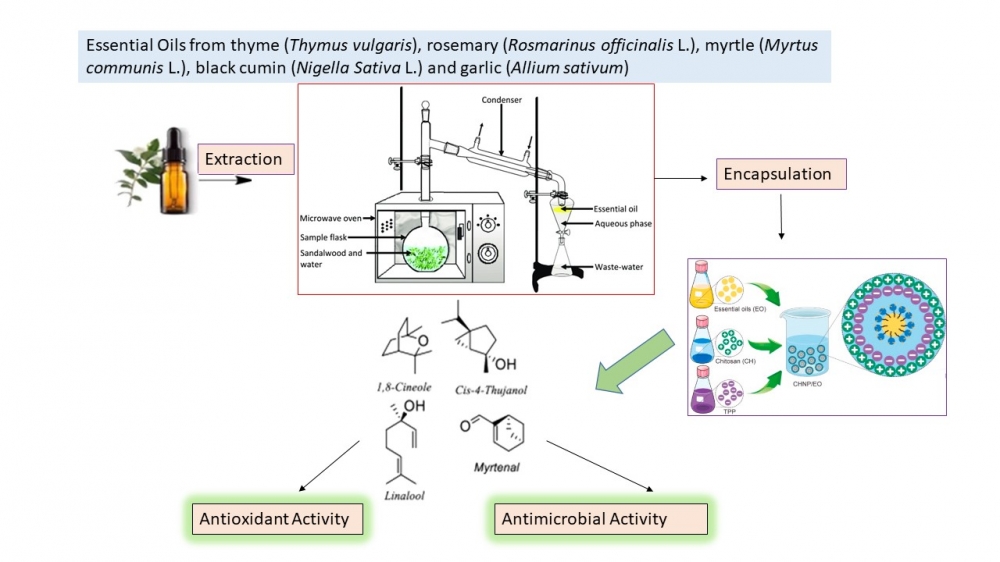JOURNAL 3075
Records of Agricultural and Food Chemistry
Year: 2024 Issue: 3 Special Issue: Abstracts 3rd. TCS, International Food Chemistry Congress February 29-March 03,2024 Antalya Türkiye
p.28 - 28
Viewed 892 times.
GRAPHICAL ABSTRACT

ABSTRACT
The methods of obtaining essential oils from various plants and their antioxidant activities of essential oils with antioxidant effects were presented in this study. Essential oils can be obtained from various parts of plants (leaves, fruits, barks and roots) through distillation, extraction and pressing methods [1-3]. It has been found that they have antibacterial, antifungal, antiviral, antioxidative and antimutagenic effects. In this study, the antioxidant activities of the essential oils including thyme (Thymus vulgaris), rosemary (Rosmarinus officinalis L.), myrtle (Myrtus communis L.), black cumin (Nigella Sativa L.) and garlic (Allium sativum), which are natural antioxidants, are synthetic compared to that of synthetic antioxidants such as BHA, BHT and TBHQ. The antibacterial activities of natural essential oils have also been investigated. In terms of food safety, the lack of carcinogenic and mutagenic effects of the essential oils and the increase in demand for natural additives resulted in the evaluation of their potential to be used instead of many synthetic food additives in oils and oil containing foods [4-5].
KEYWORDS- Essentail oil
- Myrtus communis L.
- Thymus vulgaris L.
- Rosmarinus officinalis L.
- Antioxidant Activity
- DPPH radical scavenging